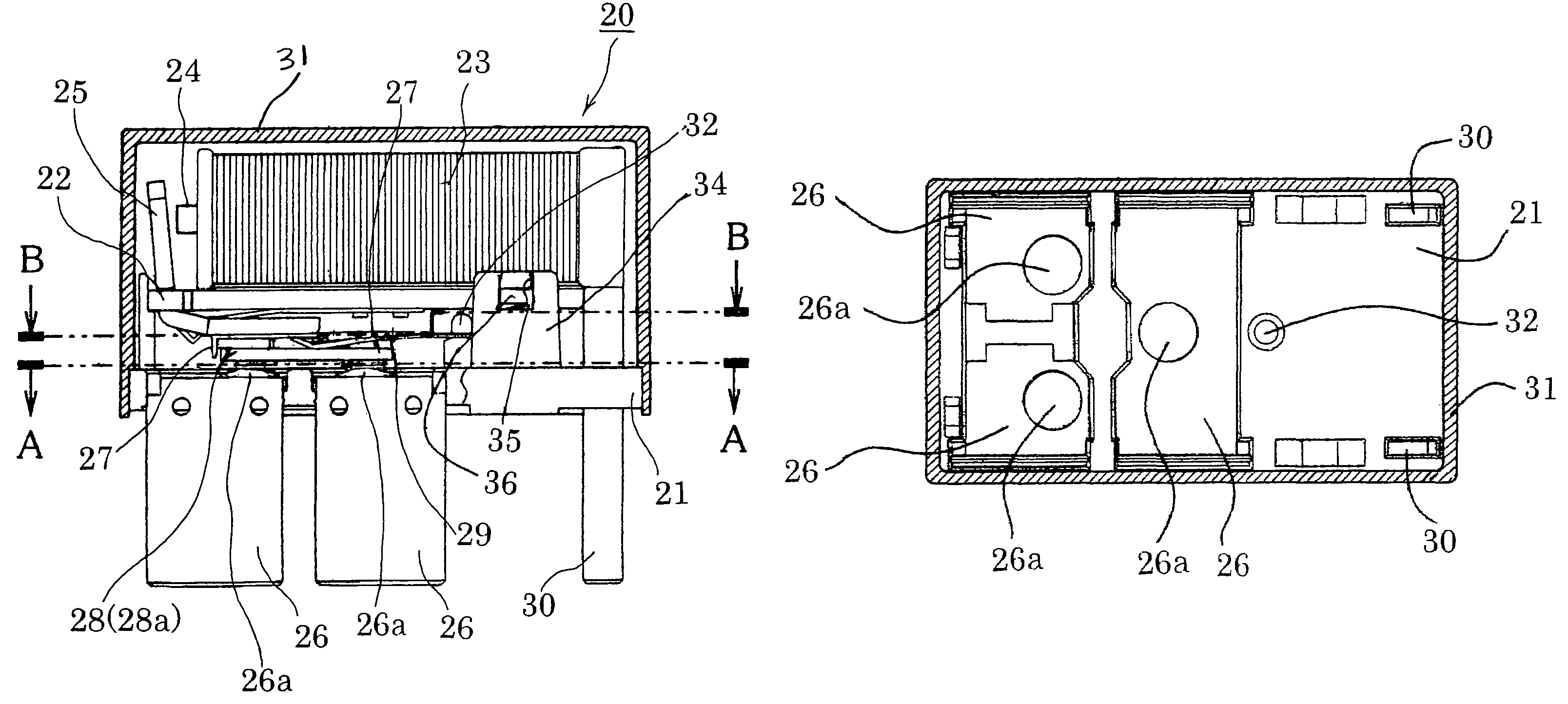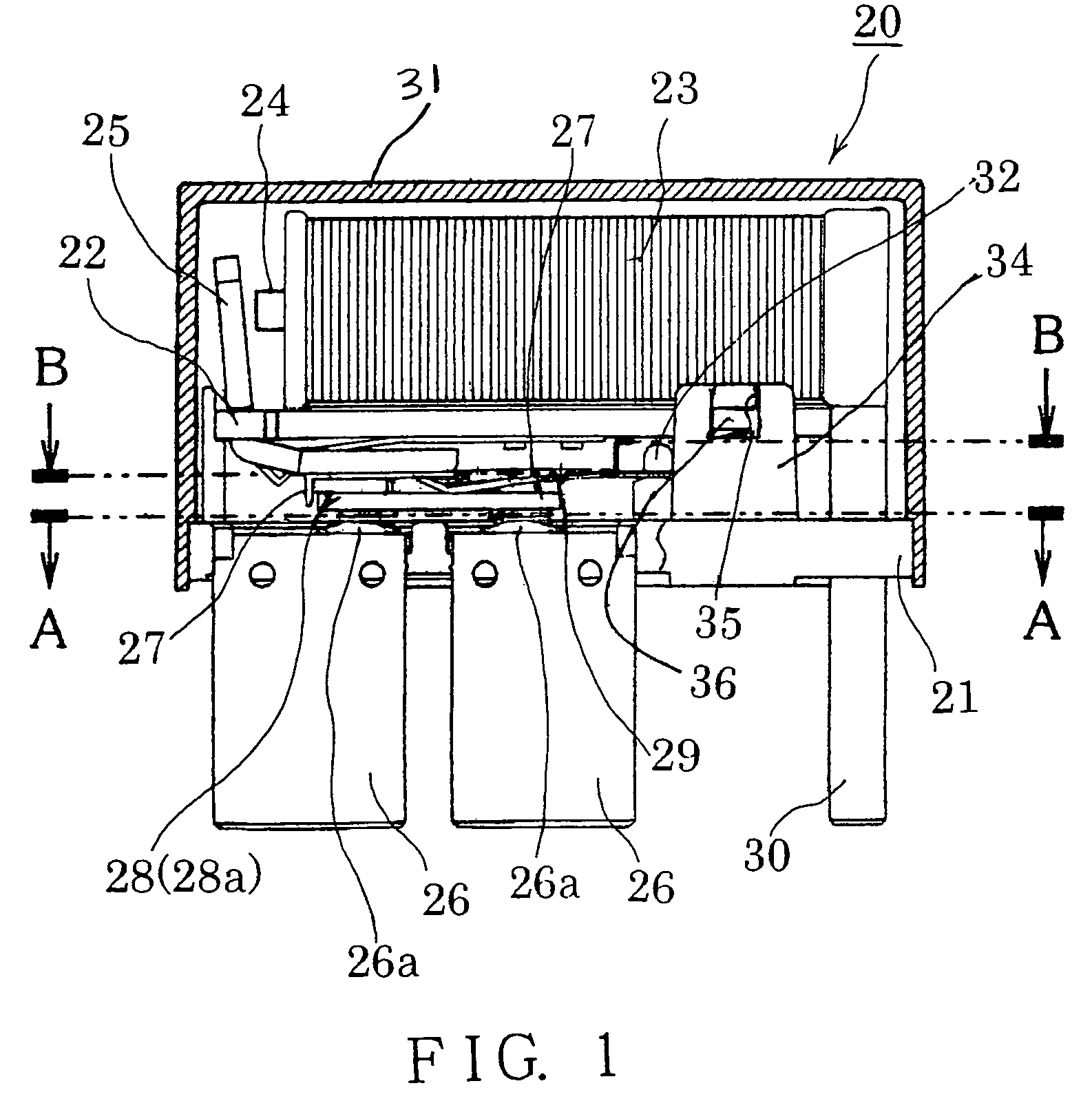Electromagnetic relay
a technology of electromagnetic relays and relays, applied in electromagnetic relays, electrical apparatus, electromagnetical relay details, etc., can solve problems such as malfunctioning relays, achieve large electric currents, ensure durability and contact stability, and reduce internal resistance
- Summary
- Abstract
- Description
- Claims
- Application Information
AI Technical Summary
Benefits of technology
Problems solved by technology
Method used
Image
Examples
Embodiment Construction
[0030]We would like to provide detailed explanations about a preferred embodiment of this invention by using FIG. 1 to FIG. 11. FIG. 1 shows an electromagnetic relay 20 of this invention. This electromagnetic relay 20 consists of a thick insulation base 21 like a flat panel, which is produced through a molding method, yoke 22, coil 23, iron core 24, armature 25, fixed terminals 26 fixed contacts 26a, which are respectively installed on fixed terminals 26, moveable springs 27, moveable plate 28, which is supported and fastened by moveable springs 27, moveable contacts 28a, which connect or disconnect with fixed contacts 26a, elastic plate 29, which elastically pressure-releases moveable springs 27, coil terminal 30 and cap 31. The electromagnetic relay 20 shown in FIG. 1 is an electromagnetic relay with one-circuit three-contact gap as schematically shown in the circuit diagram of FIG. 11.
[0031]The electromagnetic relay 20 is structured so that the armature 25 drives the moveable spr...
PUM
 Login to View More
Login to View More Abstract
Description
Claims
Application Information
 Login to View More
Login to View More - R&D
- Intellectual Property
- Life Sciences
- Materials
- Tech Scout
- Unparalleled Data Quality
- Higher Quality Content
- 60% Fewer Hallucinations
Browse by: Latest US Patents, China's latest patents, Technical Efficacy Thesaurus, Application Domain, Technology Topic, Popular Technical Reports.
© 2025 PatSnap. All rights reserved.Legal|Privacy policy|Modern Slavery Act Transparency Statement|Sitemap|About US| Contact US: help@patsnap.com



